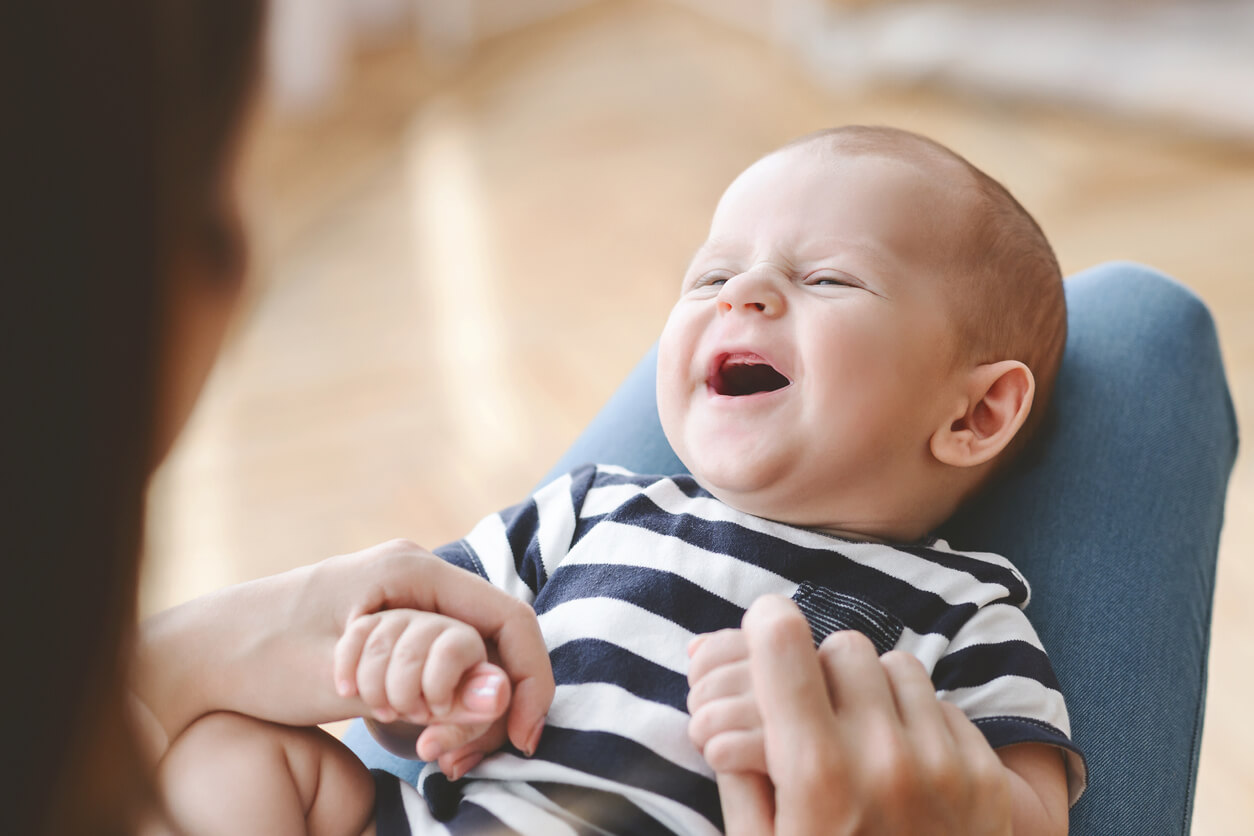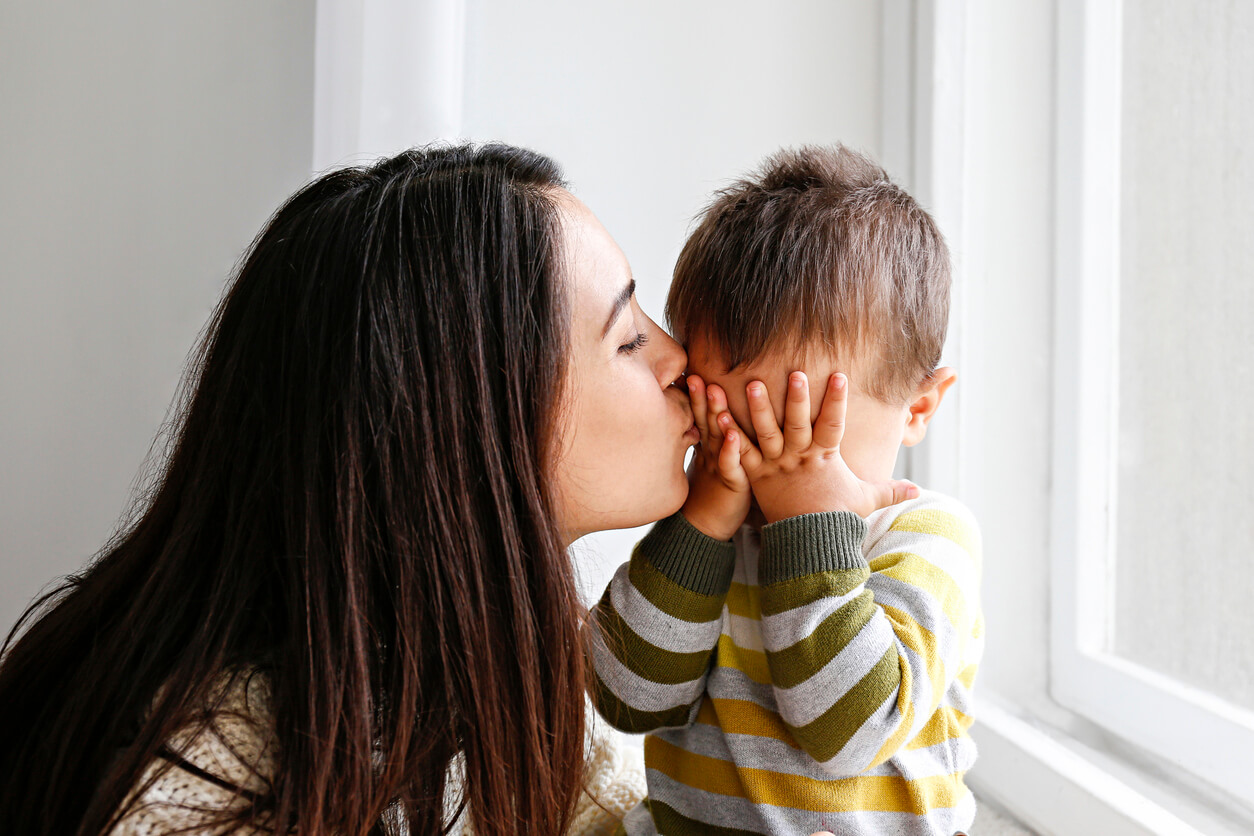12 Curiosities About the Emotional World of Children


Written and verified by the psychologist Mara Amor López
From birth, babies show certain attitudes that are the prelude to the emotions that are about to develop. The emotional world of children in their first years of life is determined by the five basic emotions: Anger, disgust, joy, sadness, and fear. We’re all born with them, and they develop little by little as we grow and develop.
Emotions will be the tools that children will have to cope with any situation they face. In addition, these will be what will drive them to react. The basic emotions at the beginning will give way to secondary emotions, such as compassion, shame, frustration, and loneliness, among others. All of them will be part of the child’s life and also of their adulthood. Therefore, it’s important that from an early age, they know how to understand, recognize, and manage their emotions.
The emotional world of children
Many times, a child cries inconsolably or laughs out loud and adults don’t know why. The reason is that the child is growing up and emotions are beginning to appear. The child will have to begin to recognize and master them, but this process won’t be easy. To do this, parents must guide and help their children to name their emotions and talk about how they make them feel.
According to a study titled Psychology of Emotion, carried out by psychologist Psychology Mariano Chóliz, from the Department of Basic Psychology at the University of Valencia, emotions have three functions: Adaptive, motivational, and social. All emotions have an important function for the adaptation of the person and their personal adjustment, even the unpleasant ones. The emotional development of children begins at birth with the most primitive emotions when they show dislike or interest toward their environment. And this continues until adolescence when all of them will finish developing.
Curiosities about the emotional world of children

There are certain aspects of the emotional world of children that we may not be aware of. Do you want to know some of them? We’ll tell you some curiosities about children’s emotions, so don’t miss them and keep reading!
-
- Newborns have a basic emotional world. Babies show dislike toward situations that make them uncomfortable, such as strong flavors or loud noises, among others. Likewise, they show interest in what attracts their attention or pleases them.
- Babies don’t have the ability to control their emotions because they don’t yet know them. For this reason, they can feel overwhelmed even with things that make them feel good.
- At 10 months, they have all the basic emotions: Anger, joy, sadness, fear, and disgust.
- Babies aren’t able to feel shame, envy, or pride because they don’t yet know these emotions.
- As a baby’s brain develops, they’ll smile and show pleasure when they like something. They’ll also show interest in their favorite toys or foods and show unhappiness or anger when they don’t like something or feel tired.
- The emotion of joy appears a few months before sadness. Later on, envy and confidence will be added to the emotional repertoire.
- When children begin to feel the basic emotions, in a moment of emotional overwhelm, they can burst into tantrums. For example, when the child feels sadness, fear, anger, or pain, if they don’t know how to identify it, they’ll feel confused, and this can lead to behavioral problems and anxiety.
- Children with good emotional intelligence perform better in school.
- Normally, children don’t show fear until they’re 7 or 8 months old. However, according to a study by Theodore Gaensbauer and Susan Hiatt (Facial Communication of Emotion in Early Infancy), children who are abused may show signs of fear as early as 3 months of age.
- Children aren’t able to regulate their emotions on their own, so adults must help them learn how to do so. This can be through games or stories and, above all, when they’re calm and quiet.
- From the moment a child begins to feel emotions, parents should help them to identify them and name them so that they can achieve good emotional management.
- Children should be allowed to express their emotions. Regardless of whether it’s a boy or a girl or what their age is, if they need to cry, they should do so. Children should not be told phrases such as: “Boys don’t cry” or “Crying is for babies”.

Children’s emotions: A whole world to discover
From the moment they’re born, parents never stop learning about our children, who are like a box of surprises, as every day, they come up with something new. As for the emotional world of children, we’re surprised by how these primitive emotions evolve over the months, which end up becoming their basic emotional repertoire. Adults must teach them to manage these emotions so that they achieve healthy expression and don’t end up exploding with tantrums or outbursts. We¿re the ones who have to guide them in this world that they’re just beginning to know.
From birth, babies show certain attitudes that are the prelude to the emotions that are about to develop. The emotional world of children in their first years of life is determined by the five basic emotions: Anger, disgust, joy, sadness, and fear. We’re all born with them, and they develop little by little as we grow and develop.
Emotions will be the tools that children will have to cope with any situation they face. In addition, these will be what will drive them to react. The basic emotions at the beginning will give way to secondary emotions, such as compassion, shame, frustration, and loneliness, among others. All of them will be part of the child’s life and also of their adulthood. Therefore, it’s important that from an early age, they know how to understand, recognize, and manage their emotions.
The emotional world of children
Many times, a child cries inconsolably or laughs out loud and adults don’t know why. The reason is that the child is growing up and emotions are beginning to appear. The child will have to begin to recognize and master them, but this process won’t be easy. To do this, parents must guide and help their children to name their emotions and talk about how they make them feel.
According to a study titled Psychology of Emotion, carried out by psychologist Psychology Mariano Chóliz, from the Department of Basic Psychology at the University of Valencia, emotions have three functions: Adaptive, motivational, and social. All emotions have an important function for the adaptation of the person and their personal adjustment, even the unpleasant ones. The emotional development of children begins at birth with the most primitive emotions when they show dislike or interest toward their environment. And this continues until adolescence when all of them will finish developing.
Curiosities about the emotional world of children

There are certain aspects of the emotional world of children that we may not be aware of. Do you want to know some of them? We’ll tell you some curiosities about children’s emotions, so don’t miss them and keep reading!
-
- Newborns have a basic emotional world. Babies show dislike toward situations that make them uncomfortable, such as strong flavors or loud noises, among others. Likewise, they show interest in what attracts their attention or pleases them.
- Babies don’t have the ability to control their emotions because they don’t yet know them. For this reason, they can feel overwhelmed even with things that make them feel good.
- At 10 months, they have all the basic emotions: Anger, joy, sadness, fear, and disgust.
- Babies aren’t able to feel shame, envy, or pride because they don’t yet know these emotions.
- As a baby’s brain develops, they’ll smile and show pleasure when they like something. They’ll also show interest in their favorite toys or foods and show unhappiness or anger when they don’t like something or feel tired.
- The emotion of joy appears a few months before sadness. Later on, envy and confidence will be added to the emotional repertoire.
- When children begin to feel the basic emotions, in a moment of emotional overwhelm, they can burst into tantrums. For example, when the child feels sadness, fear, anger, or pain, if they don’t know how to identify it, they’ll feel confused, and this can lead to behavioral problems and anxiety.
- Children with good emotional intelligence perform better in school.
- Normally, children don’t show fear until they’re 7 or 8 months old. However, according to a study by Theodore Gaensbauer and Susan Hiatt (Facial Communication of Emotion in Early Infancy), children who are abused may show signs of fear as early as 3 months of age.
- Children aren’t able to regulate their emotions on their own, so adults must help them learn how to do so. This can be through games or stories and, above all, when they’re calm and quiet.
- From the moment a child begins to feel emotions, parents should help them to identify them and name them so that they can achieve good emotional management.
- Children should be allowed to express their emotions. Regardless of whether it’s a boy or a girl or what their age is, if they need to cry, they should do so. Children should not be told phrases such as: “Boys don’t cry” or “Crying is for babies”.

Children’s emotions: A whole world to discover
From the moment they’re born, parents never stop learning about our children, who are like a box of surprises, as every day, they come up with something new. As for the emotional world of children, we’re surprised by how these primitive emotions evolve over the months, which end up becoming their basic emotional repertoire. Adults must teach them to manage these emotions so that they achieve healthy expression and don’t end up exploding with tantrums or outbursts. We¿re the ones who have to guide them in this world that they’re just beginning to know.
All cited sources were thoroughly reviewed by our team to ensure their quality, reliability, currency, and validity. The bibliography of this article was considered reliable and of academic or scientific accuracy.
Gaensbauer, T.J & Hiatt, S. (1984). Facial Communication of Emotion in Early Infancy. En Fox, N.A & Davidson,R. (Eds), The Psychobiology of Affective Development (PLE: Emotion). (207-229). Lawrence Erlbaum Associates, Inc. En internet: https://books.google.es/bookshl=es&lr=&id=pWqLBQAAQBAJ&oi=fnd&pg=PA207&dq=Facial+Communication+of+Emotion+in+Early+Infancy&ots=nsK04Ehkt1&sig=W74HxyUfvv8OTICMuRzHqwKnVc#v=onepage&q=Facial%20Communication%20of%20Emotion%20in%20Early%20Infancy&f=false
Shapiro, L. E. (2002). La salud emocional de los niños (Vol. 16). Edaf.
Sande, J. A. (2017). Educación emocional infantil. Sincronía Editorial.
GARCÍA, M. D. M. V., & EDUCATIVA, I. (2009). El desarrollo emocional de los niños. Innovación y experiencias Educativas, 15. En internet: http://biblioteca.formaciondocente.com.mx/08_DesarrolloNino/El%20Desarrollo%20Emocional%20de%20los%20Ninos.pdf
This text is provided for informational purposes only and does not replace consultation with a professional. If in doubt, consult your specialist.








